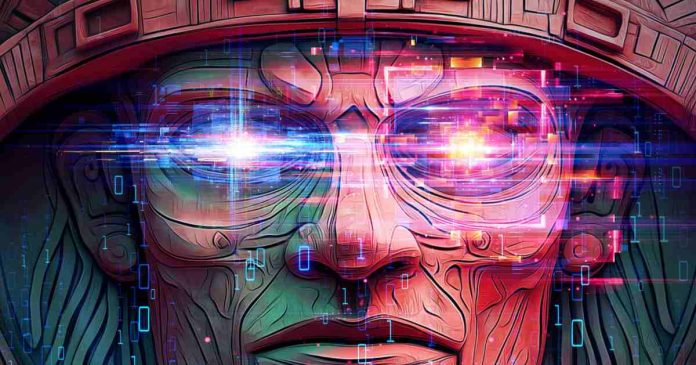Welcome to the Wild World of Content!
This article dives into the trends, technology, and transformations driving content creation today. From the rise of short-form videos to the ethical dilemmas of Artificial intelligence, we explore how media is evolving and how we can adapt.
Content is no longer just a part of our lives; it defines how we connect, communicate, and even think. From viral dance challenges to AI-generated poetry, modern media has reshaped the way we consume and create information. But with this power comes a challenge: how do we keep up with an ever-changing digital world while staying authentic and responsible?
Scheduled TV to Unlimited Access: How Media Consumption has Changed
When I was young, content consumption was a routine, not an all-day activity. Mornings started with Tom & Jerry and Subah Bakhair with Chacha Jee before heading to school. At night, we had only an hour between 8 and 9 to watch television before it was switched off. Entertainment had boundaries, and so did our engagement with it.
Fast forward to today, and those limitations have completely disappeared. Anyone, anywhere, can watch anything at any time. The rise of digital platforms has made content available on demand, blurring the lines between structured entertainment and constant engagement. While this access has opened up incredible opportunities, it has also reshaped our values, norms, and even our attention spans.
The Rise of Modern Media: A Whole New World
Once upon a time, media was controlled by a few TV networks, radio stations, and newspapers that dictated what we consumed. Today, the power has shifted. Social media platforms like YouTube, Instagram, and TikTok have given everyone a voice, making content creation more democratic than ever before.
This shift has led to the rise of the creator economy, where influencers and everyday users shape global conversations. Brands have also caught on, partnering with content creators to craft relatable and engaging campaigns. The result? A media landscape that’s not only fast-moving but also deeply personal and interactive.
The Secret Sauce of Virality
Why do some videos, memes, or posts go viral while others fade into obscurity? The magic formula often includes relatability, emotion, and perfect timing. Content that taps into universal experiences—whether it’s humour, nostalgia, or a powerful message, has a greater chance of spreading like wildfire.
But there’s a downside. The pressure to create viral content can push creators to prioritise shock value over substance. Sensationalism, misinformation, and even unethical tactics can come into play, leading to content that might gain views but lacks long-term impact. True success lies in meaningful engagement rather than fleeting digital fame.
AI: The New Co-Creator of Content
Artificial Intelligence has silently but significantly transformed the media landscape. From personalised content recommendations to AI-generated images and text, technology is now an active participant in content creation. Tools such as ChatGPT can write articles in seconds, and AI-driven algorithms decide what we see on our feeds.
However, this raises critical questions: Who owns AI-generated content? Can AI replace human creativity? While AI enhances efficiency, it lacks the human touch—the emotions, perspectives, and cultural nuances that make content truly impactful. The challenge for creators is to find a balance, using AI as a tool rather than a replacement for originality.
The Ethical Challenges of Content Creation
As content creation grows, so do its ethical dilemmas. Issues like misinformation, copyright infringement, and cultural appropriation require creators to be more responsible than ever. Fact-checking, giving credit where it’s due, and respecting diverse perspectives are essential in maintaining credibility.
Beyond ethics, there’s also the issue of mental health. The pressure to stay relevant, constantly create, and chase engagement can be overwhelming. Many content creators experience burnout, anxiety and stress from the never-ending cycle of online validation. Authenticity and mindful content consumption are key to fostering a healthier digital environment.
Trends Shaping the Future of Content Creation
Short-Form Videos: TikTok, Instagram Reels, and YouTube Shorts dominate engagement. The faster the content, the better the retention.
Interactive Content: Polls, live Q&A sessions, and community-driven content create stronger audience connections.
Sustainability & Social Impact: Consumers increasingly support brands and creators who advocate for meaningful causes.
AI-Assisted Creativity: Tools like DALL-E and generative AI expand creative possibilities, but human creativity still leads the way.
Tips for Navigating the Content Landscape
Stay Adaptable: Trends change overnight, so be ready to evolve.
Focus on Quality Over Quantity: Thoughtful content resonates more than mass-produced posts.
Understand Your Audience: Know your audience’s preferences, values, and expectations.
Leverage Technology: Use AI and digital tools smartly but keep originality intact.
Maintain Ethical Standards: Transparency, accuracy, and inclusivity should always be at the core of your content.
The Future is in Our Hands
The world of content creation is as exciting as it is unpredictable. Unlike in the past, where media had fixed boundaries, today’s digital world offers endless possibilities. But with this freedom comes responsibility. The way we create, consume, and share content will shape not just our screens but also our values, perceptions, and interactions.
Content creation isn’t just about keeping up with trends; it’s about defining them. Whether through insightful storytelling, creative visuals, or authentic engagement, the goal is to make a lasting impact. The future of media isn’t just about what we watch; it’s about what we choose to create.

